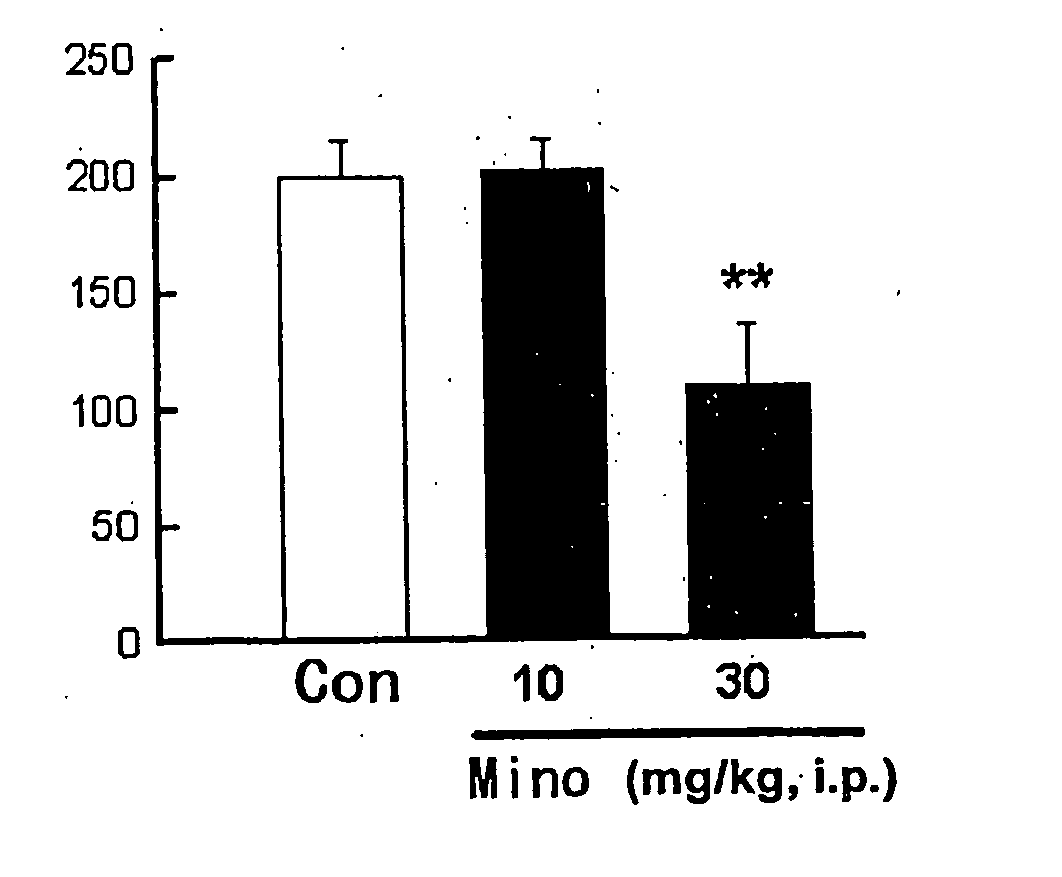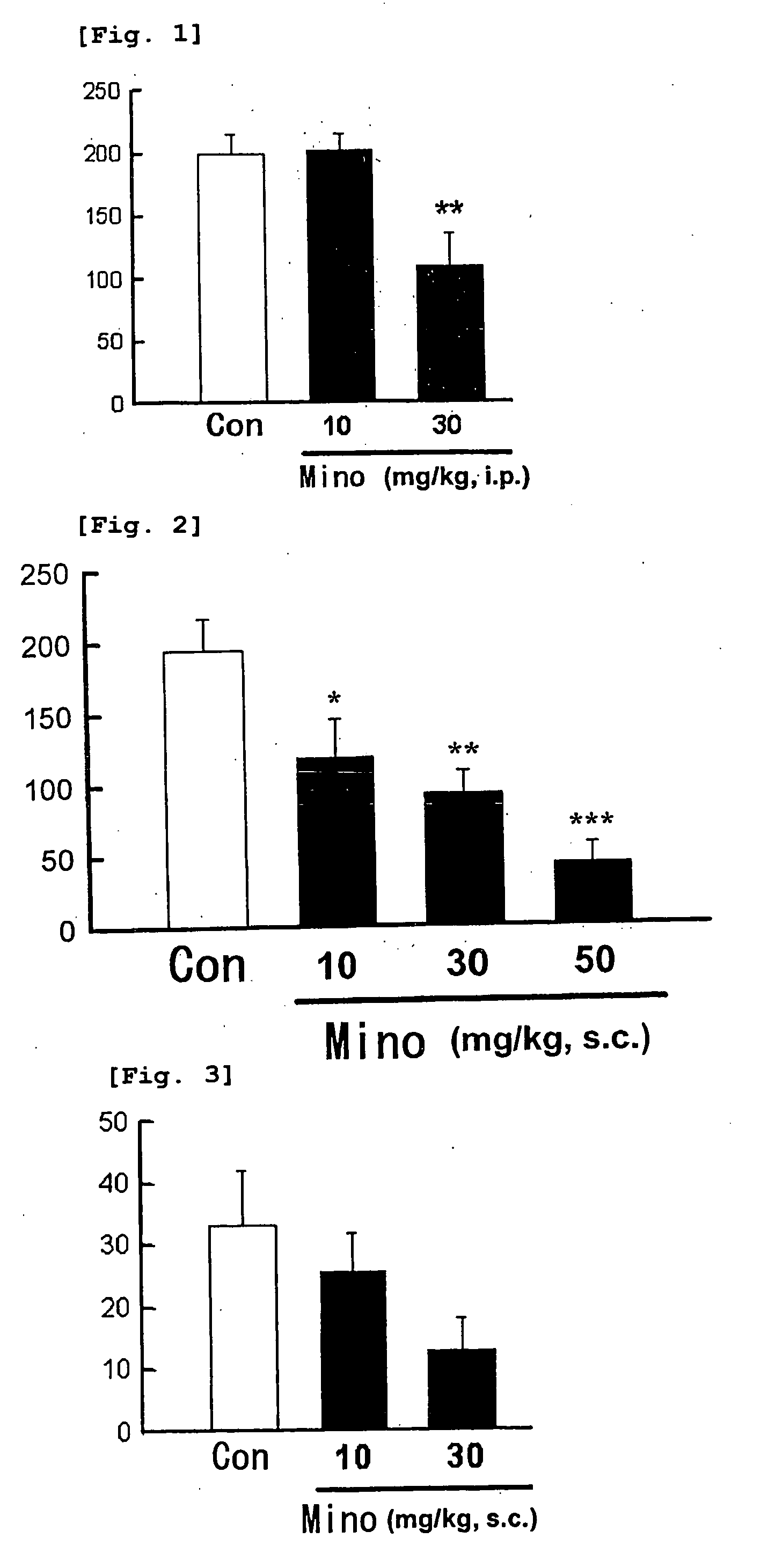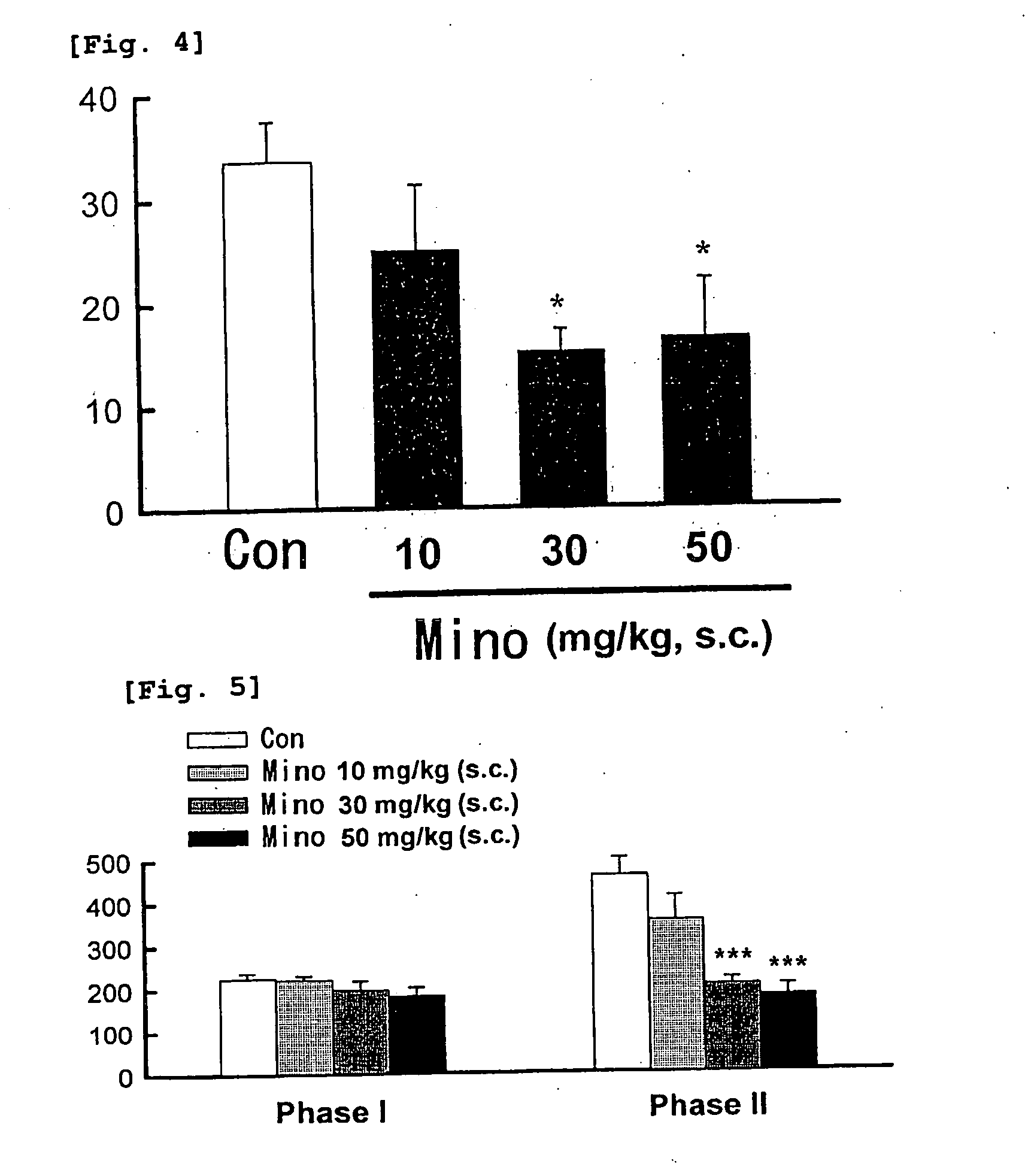P2x receptor inhibitor
- Summary
- Abstract
- Description
- Claims
- Application Information
AI Technical Summary
Benefits of technology
Problems solved by technology
Method used
Image
Examples
example 1
P2X2 / 3 Receptor Inhibitory Activity
[0038] The test was carried out in the following manner by reference to Br. J. Pharmacol., 108, p. 436 (1993).
[0039] CHO cell in which rat type P2X2 / 3 receptor was forcedly expressed was cultured at 37° C. in an atmosphere of 5% CO2 using Ham's F-12 nutrient mixture containing 10% fetal bovine serum (FBS), 100 units / ml penicillin, 100 μg / ml streptomycin and 400 μg / ml G-418. On the day before the test, the resulting cells were inoculated onto a 96-well culture plate at a density of about 6×104 cells / well and cultured for 24 hours in the medium containing 2 units / ml of apyrase 2. On the day of the test, the medium was removed, and then this was incubated at room temperature for 15 minutes using a reaction buffer containing each substance to be tested, 275 μM of [14C]-guanidine hydrochloride (guanidium) and 4 μM of αβ-methylene ATP (αβ-me ATP). This was washed 4 times with an ice-cooled washing buffer, shaken for 5 minutes by adding 0.1 N NaOH and ...
example 2
Action upon αβ-me ATP Induced Pain Behavior
[0041] This test was carried out with reference to the methods described in Br. J. Pharmacol., 122, p. 365 (1997) and J. Neurosci., 20, p. 16 (2000). The test substance or solvent was intraperitoneally administered (i. p.) to mice (n =6) at a volume of 10 ml / kg. After 30 minutes thereof, a P2X1 and P2X2 / 3,3 receptor agonist, αβ-me ATP (0.6 μmol / 20 μl), was administered under the skin of the sole of left hind leg. Total time of lifting (a behavior of lifting the administered side sole from the floor face) and licking (a behavior of licking and biting the administered side sole) occurred during 5 minutes just after the administration of αβ-me ATP was measured. The results are shown in FIG. 1.
[0042] In addition, another test was carried out in the same manner as in the above, except that the test substance or solvent was subcutaneously administered (s. c.) to the dorsal side of each mouse at a volume of 10 ml / kg, with the results shown in F...
example 3
Action upon Acetic Acid Induced Pain Behavior
[0045] This test was carried out with reference to the method described in Pain, 96, p. 99 (2002). The test substance or solvent was subcutaneously administered to mice (n =8) at a volume of 10 ml / kg. After 30 minutes thereof, 0.6% acetic acid was intraperitoneally administered (10 ml / kg). Frequency of writhing (a body writhing behavior) occurred within a period of 15 minutes, starting from 2 minutes after the acetic acid administration until 17 minutes thereafter, was measured. The test was carried out twice as the test 1 and test 2. Respective results are shown in FIG. 3 and FIG. 4. Test on the statistical significant difference between the solvent administration group used as a control group and the test substance administration group was carried out using the Dunnett method.
[0046] Minodronic acid dose-dependently suppressed the writhing behavior within the range of 10 and 30 mg / kg. In this connection, behavioral side effect was not...
PUM
| Property | Measurement | Unit |
|---|---|---|
| Bioabsorbable | aaaaa | aaaaa |
Abstract
Description
Claims
Application Information
 Login to View More
Login to View More - R&D
- Intellectual Property
- Life Sciences
- Materials
- Tech Scout
- Unparalleled Data Quality
- Higher Quality Content
- 60% Fewer Hallucinations
Browse by: Latest US Patents, China's latest patents, Technical Efficacy Thesaurus, Application Domain, Technology Topic, Popular Technical Reports.
© 2025 PatSnap. All rights reserved.Legal|Privacy policy|Modern Slavery Act Transparency Statement|Sitemap|About US| Contact US: help@patsnap.com



